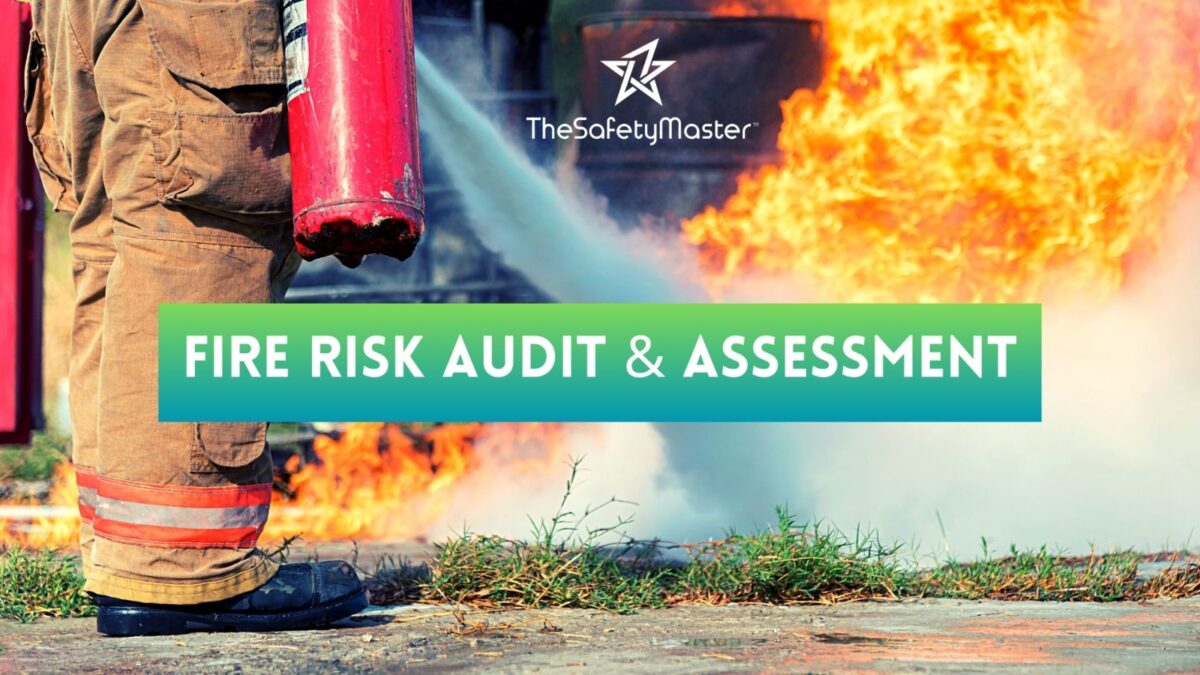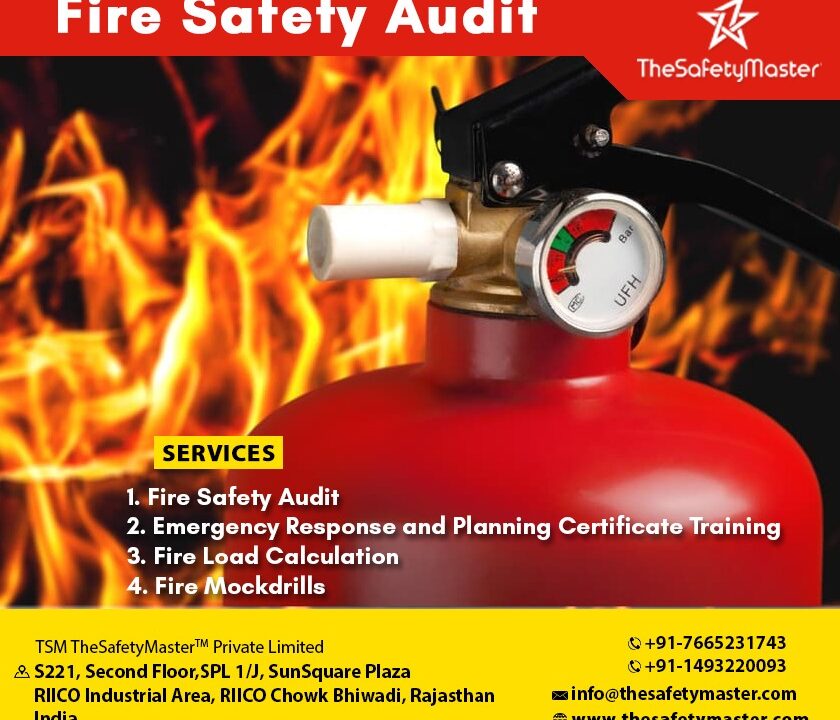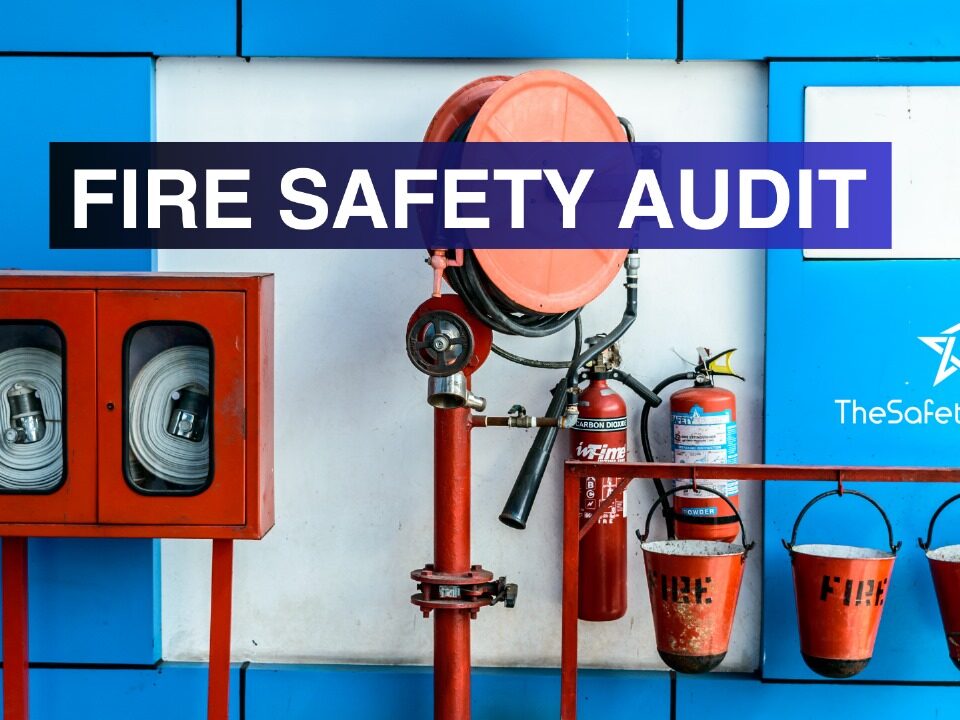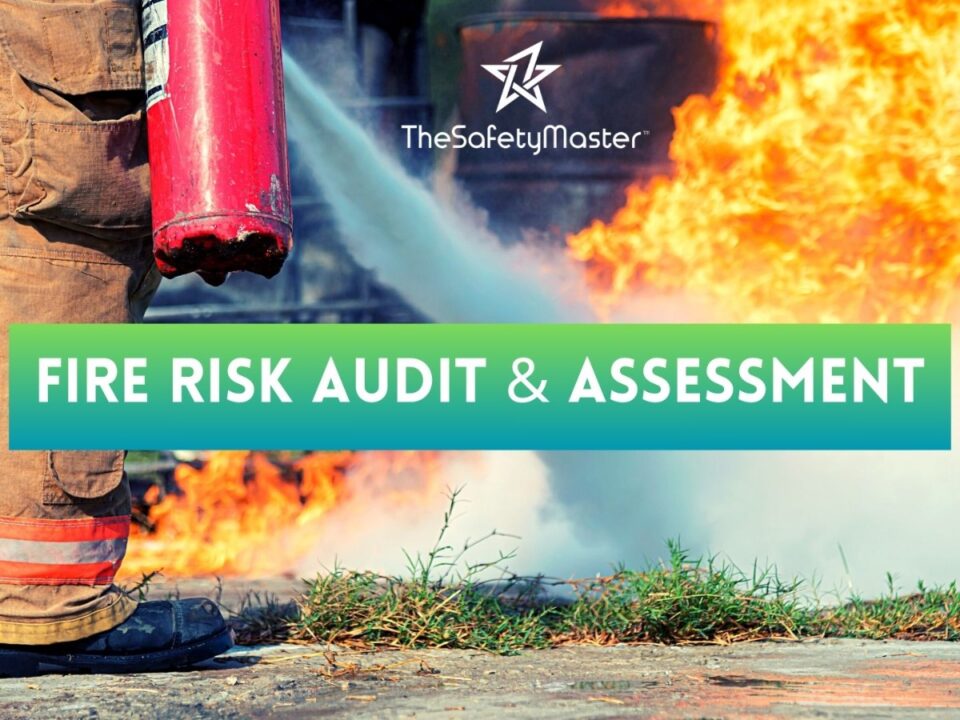Fire Audit and Fire Load Calculation Services

Safety GAP Assessment with Technology and Artificial Intelligence
May 15, 2024
Behavior Based Safety Implementation Handholding – The Safety Master
May 18, 2024Introduction
Fire safety is paramount in any building or establishment, be it residential, commercial, or industrial. Fires can cause devastating loss of life and property if not adequately managed. To ensure the safety of occupants and assets, regular fire audits are essential. In this article, we delve into the significance of fire audits, the intricacies of fire load calculation, and how The Safety Master provides comprehensive solutions in this regard.
What is a Fire Audit?
A fire audit is a systematic examination of a building’s fire safety measures and practices. It involves assessing various aspects such as fire detection systems, evacuation plans, firefighting equipment, and compliance with fire safety regulations. The primary objective of a fire audit is to identify potential fire hazards and ensure that adequate measures are in place to prevent, detect, and respond to fires effectively.
Benefits of Fire Audits
Fire audits offer numerous benefits to both property owners and occupants. Firstly, they help in identifying fire hazards and deficiencies in existing fire safety measures, allowing for timely rectification. Additionally, fire audits enhance overall fire safety awareness among occupants, leading to better preparedness and response in the event of a fire. Moreover, compliance with fire safety regulations through regular audits mitigates the risk of legal liabilities and ensures peace of mind.
Improved Safety
Legal Compliance
Enhanced Preparedness
Components of a Fire Audit
A comprehensive fire audit typically comprises several key components. These may include:
- Site Inspection: Physical examination of the building to assess fire safety measures and identify potential hazards.
- Review of Documentation: Evaluation of documents such as building plans, fire safety certificates, and maintenance records.
- Testing of Equipment: Checking the functionality of fire detection systems, alarms, extinguishers, and emergency lighting.
- Assessment of Evacuation Procedures: Reviewing evacuation plans and conducting drills to assess the effectiveness of evacuation procedures.
- Training and Awareness Programs: Providing training to staff and occupants on fire safety practices and emergency response protocols.
Fire Load Calculation
Fire load refers to the amount of combustible materials present in a given area that can contribute to the intensity and spread of a fire. Calculating fire load is crucial for determining the fire risk and designing appropriate fire safety measures.
Why Fire Load Calculation Matters
Accurate fire load calculation is essential for several reasons. Firstly, it helps in determining the fire resistance requirements of building materials and structural elements. Additionally, it aids in designing effective fire suppression systems and evacuation routes based on the potential fire hazard. Moreover, fire load calculation assists in establishing occupancy limits and ensuring compliance with building codes and regulations.
Factors Affecting Fire Load
Several factors influence the fire load of a building or space. These include:
- Type of Occupancy: Different types of occupancies, such as residential, commercial, or industrial, have varying fire load characteristics.
- Material Composition: The types and quantities of combustible materials present, including furnishings, equipment, and stored goods.
- Occupant Density: The number of people occupying the space can impact the fire load due to the presence of additional combustible materials and potential ignition sources.
- Ventilation and Airflow: Air circulation within the space affects the availability of oxygen for combustion and the spread of fire.
Fire Load Calculation Methods
Several methods can be used to calculate fire load, ranging from simple to complex approaches. These may include:
- Prescriptive Method: Based on predetermined values for different types of materials and occupancy categories.
- Engineering Analysis: Utilizes mathematical models and simulations to estimate fire load based on specific parameters such as material properties and spatial configurations.
- Empirical Equations: Derived from experimental data and statistical analysis to predict fire load based on historical trends and observations.
The Safety Master’s Services
The Safety Master is a leading provider of fire audit and fire load calculation services, offering comprehensive solutions tailored to the unique needs of each client. With a team of experienced professionals and state-of-the-art technology, The Safety Master ensures thorough assessments and accurate calculations to enhance fire safety and compliance.
How The Safety Master Works
The Safety Master follows a systematic approach to conduct fire audits and fire load calculations. Our process includes:
- Initial Consultation: Understanding the client’s requirements and assessing the scope of the project.
- Site Visit and Inspection: Conducting a thorough inspection of the premises to identify fire hazards and assess existing fire safety measures.
- Data Collection and Analysis: Gathering relevant information and data to calculate the fire load using advanced computational methods.
- Recommendations and Solutions: Providing comprehensive reports with recommendations for improving fire safety and compliance, including the design of fire suppression systems and evacuation plans.
- Follow-up and Support: Assisting clients in implementing recommended measures and providing ongoing support for maintenance and compliance.
Benefits of Choosing The Safety Master
By choosing The Safety Master for fire audit and fire load calculation services, clients can benefit from:
- Expertise and Experience: Our team consists of highly skilled professionals with extensive experience in fire safety engineering and regulatory compliance.
- Accuracy and Precision: We utilize advanced technology and industry best practices to ensure accurate assessments and calculations.
- Customized Solutions: We tailor our services to meet the specific needs and requirements of each client, providing personalized solutions for enhanced safety and compliance.
Case Studies
Case Study 1: Commercial Building
Case Study 2: Industrial Facility
Case Study 3: Residential Complex
Conclusion
In conclusion, fire audits and fire load calculation services play a crucial role in enhancing fire safety and compliance in buildings and establishments. By identifying potential hazards, assessing fire load, and implementing appropriate measures, property owners can mitigate the risk of fires and protect lives and property. The Safety Master offers comprehensive solutions and expertise in this regard, ensuring peace of mind and compliance with regulatory requirements.




